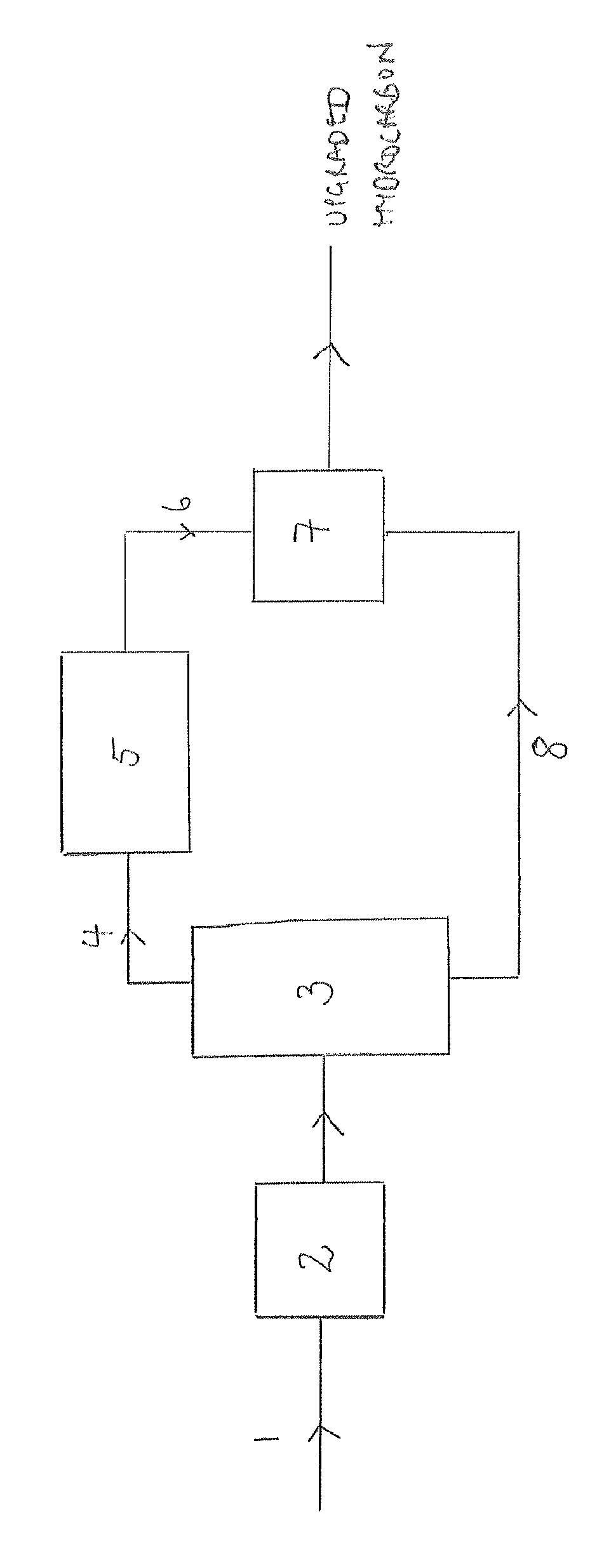Process for upgrading a heavy hydrocarbon feedstock
a technology of hydrocarbon feedstock and hydrocarbon distillation, which is applied in the direction of hydrocarbon distillation, mechanical equipment, thermal non-catalytic cracking, etc., can solve the problems of high cost of high-viscosity fluid pumping, difficult, if not impossible, to pump in their native state,
- Summary
- Abstract
- Description
- Claims
- Application Information
AI Technical Summary
Benefits of technology
Problems solved by technology
Method used
Image
Examples
Embodiment Construction
[0038]The processes of the present invention are concerned with the recovery of a hydrocarbon mixture. As used herein, the term “hydrocarbon mixture” is used to refer to a combination of different hydrocarbons, i.e. to a combination of various types of molecules that contain carbon atoms and, in many cases, attached hydrogen atoms. A “hydrocarbon mixture” may comprise a large number of different molecules having a wide range of molecular weights. Generally at least 90% by weight of the hydrocarbon mixture consists of carbon and hydrogen atoms. Up to 10% by weight may be present as sulfur, nitrogen and oxygen as well as metals such as iron, nickel and vanadium (i.e. as measured sulfur, nitrogen, oxygen or metals). These are generally present in the form of impurites of the desired hydrocarbon mixture.
[0039]The processes of the present invention are particularly useful in the upgrading of heavy hydrocarbon mixtures. A heavy hydrocarbon mixture comprises a greater proportion of hydroca...
PUM
| Property | Measurement | Unit |
|---|---|---|
| viscosity | aaaaa | aaaaa |
| pressure | aaaaa | aaaaa |
| pressure | aaaaa | aaaaa |
Abstract
Description
Claims
Application Information
 Login to View More
Login to View More - R&D
- Intellectual Property
- Life Sciences
- Materials
- Tech Scout
- Unparalleled Data Quality
- Higher Quality Content
- 60% Fewer Hallucinations
Browse by: Latest US Patents, China's latest patents, Technical Efficacy Thesaurus, Application Domain, Technology Topic, Popular Technical Reports.
© 2025 PatSnap. All rights reserved.Legal|Privacy policy|Modern Slavery Act Transparency Statement|Sitemap|About US| Contact US: help@patsnap.com


